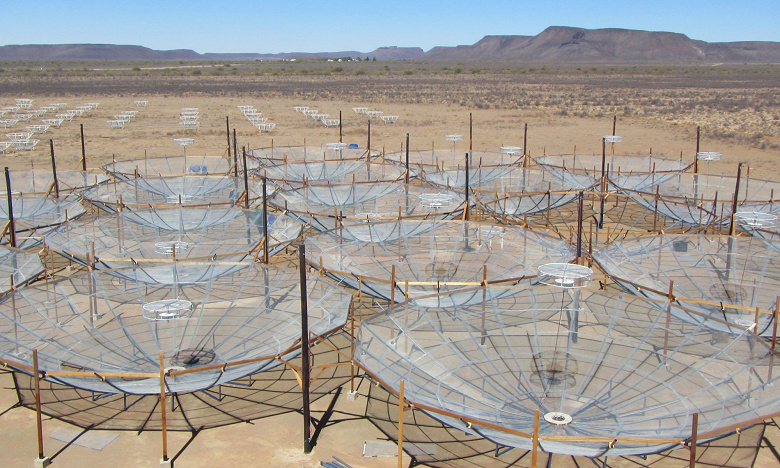Hydrogen Epoch of Reionization Array (HERA) is a new radio telescope in South Africa that will be able to observe giant clouds of hydrogen and track possible traces of dark matter decay
Hydrogen is the most abundant element in the Universe. It makes up more than 90% of all atoms, exceeding helium atoms ten times and all other elements combined by a hundred times. Hydrogen is present everywhere – from the water in the oceans to the most distant regions of the Cosmic Dawn. Astronomers are interested in neutral hydrogen, which can emit weak radio emissions.
Line 21 cm is the result of the transition of a hydrogen electron from one energy state to another. This occurs when the spins of the electron and proton bound by a hydrogen molecule are oriented in the same way. If the spins are aligned, the energy of hydrogen will be slightly higher. However, when the spins are in opposite directions, the electron can change its spin by emitting a photon. The emission of a photon can occur spontaneously. Therefore, wherever hydrogen clouds are concentrated, they emit radio energy with a wavelength of 21 cm.
This property of neutral hydrogen helps astronomers study its movement in the Universe and its cosmological redshift. In one of the first experiments using this method to study the movement of hydrogen in the Milky Way and nearby galaxies, astronomer Vera Rubin was able to detect the presence of dark matter. Now a new study shows that the 21 cm line may provide the first evidence for the existence of dark matter particles.

New telescope could detect decaying dark matter in the early universe
The study will take place on the Hydrogen Epoch of Reionization Array (HERA) radio telescope, located in South Africa and optimized for observing hydrogen in the early stages of the Universe. Once launched, HERA will map the large-scale structure of hydrogen during the time of cosmic darkness and the emergence of the first stars and galaxies. At this time, the Universe was filled with dark matter and clouds of hydrogen.
If dark matter is truly neutral and only interacts gravitationally with matter and light, the 21 cm line becomes the only light emitted in the early stages of the Universe. However, the most common model of dark matter involves the existence of particles known as weakly interacting massive particles (WIMPs). Neutral dark matter particles are significantly heavier than ordinary matter particles such as protons and electrons. In certain cases, dark matter particles can decay into ordinary matter, creating positrons, electrons, protons, and antiprotons. In this case, energetic decay particles will also interact in the radio range with a wavelength of 21 cm.
Based on observations of the cosmic background and other studies, it is known that the half-life of WIMP particles is very long. So far, we have not found any evidence of dark matter decay, which could mean that these particles either do not exist or have a half-life of more than a trillion years. New research shows that even with a thousandfold increase in half-life, HERA will be able to detect its presence in the early Universe. This will require only 1000 hours of observation.
Even if HERA does not find any evidence of dark matter decay, the data obtained from HERA may rule out some WIMP models and narrow the choice of models from the group.




